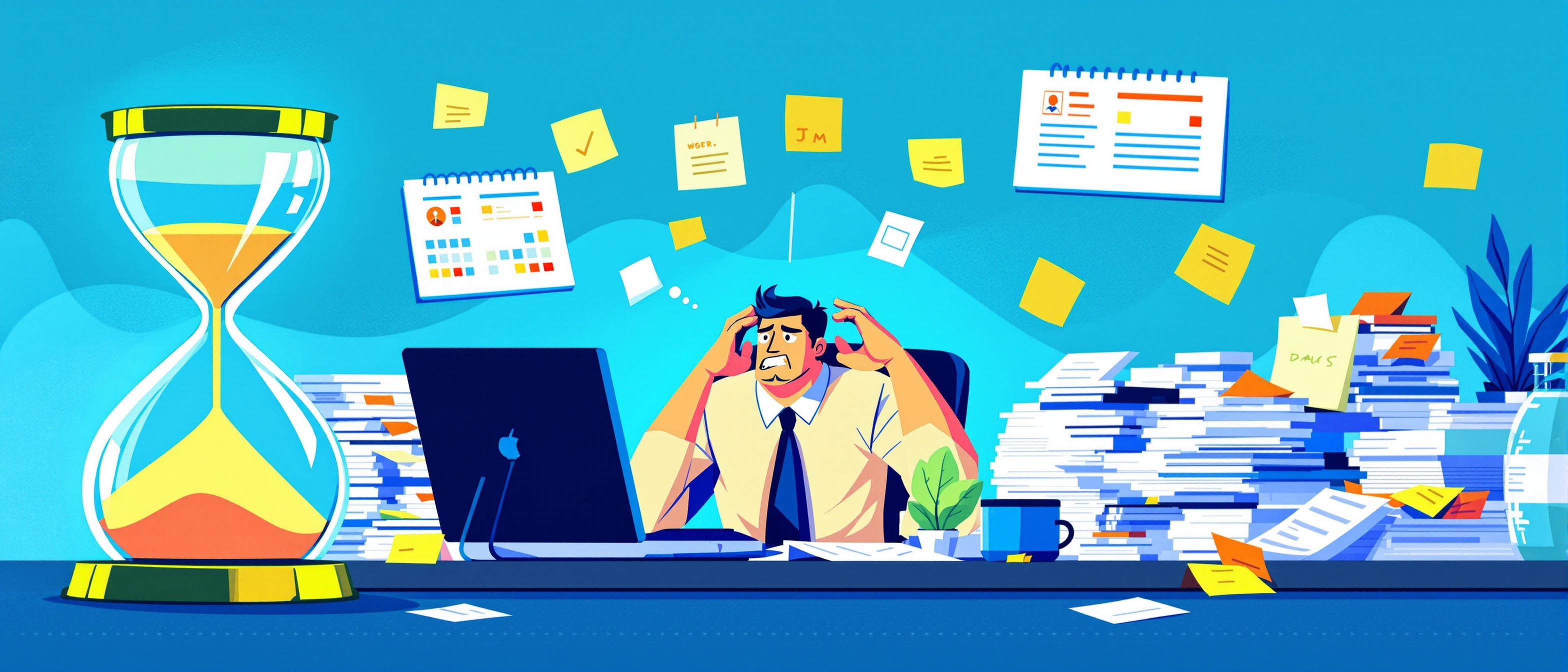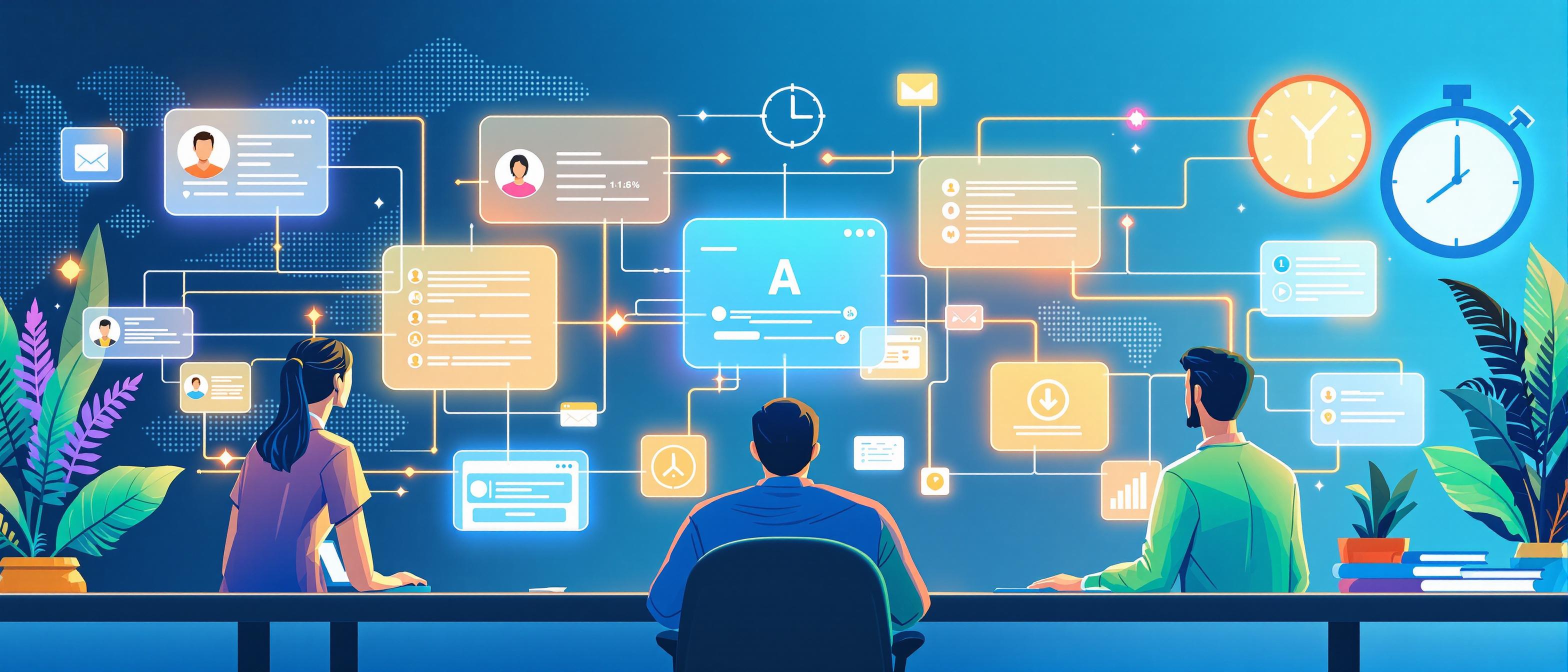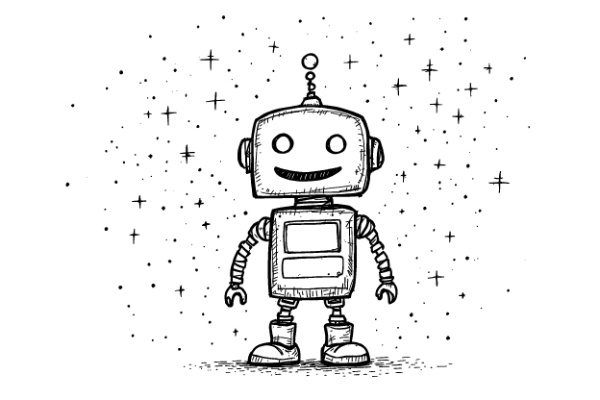It was close to midnight, and I was in that strange half-awake zone where the mind wanders off-road. The office was quiet except for the hum of a distant HVAC unit. I remember sifting through a digital stack of resumes—pages upon pages of repetitive details, job histories that began blending into one another—and feeling the weight of recruiting cycles that seemed endless. Back then, I had no idea how radically things would shift once we started using AI tools. In those hours, I had a hunch that the old methods wouldn’t hold for much longer, that something needed to break. I just didn’t know what shape the solution would take.
Why This Matters
A few weeks later, a hiring manager asked, “Why does it take so long to find a decent candidate?”
Our team had strong recruiters, clear job specs, and well-tuned job ads. Yet, the delay persisted.
People were dropping out mid-process. Others were stuck for weeks waiting on feedback. The time-to-hire was creeping upward month by month. Meanwhile, the competition had started snapping up qualified talent more efficiently.
I was bothered by the inefficiency—time lost, candidates frustrated, managers annoyed. Everyone was feeling the drag, and it hit me that the real issue was a funnel clogged with manual tasks. We needed something smarter, faster, more consistent. More…aware.
The Friction Points
Think about the mundane steps: reading through hundreds of resumes that follow roughly the same pattern, coordinating interviews with multiple stakeholders, sending routine follow-up emails. In an era where we can get groceries delivered within an hour, why did hiring still feel like trudging through knee-deep mud?

Often the friction isn’t in the big decisions—like who finally gets the offer. It’s the thousands of tiny moments before that, each draining a bit of time and patience. One recruiter told me, “It’s like I’m stuck playing Tetris with schedules, not actually hiring.” Another complained about the mental fatigue of scanning resumes for the same keywords over and over. The friction added up, slowing everything down.
We always thought speed meant cutting corners, but maybe speed could mean cutting out the junk work.
– A colleague’s late-night reflection
Enter the Machines (But Not as Overlords)
When the concept of using AI emerged, some resisted. They imagined a robotic overlord pushing human judgment aside, making cold decisions. But the better analogy, I’d learn, was a co-pilot rather than a usurper. Early experiments showed that AI could handle repetitive tasks—like sorting resumes, suggesting which candidates matched certain skill sets—so humans could focus on what they do best: nuanced judgment, genuine conversations, building trust. At first, these tools felt experimental, even gimmicky. But as we refined their usage, the team’s attitude shifted from suspicion to relief.
Picture this: Instead of manually skimming 300 resumes for a software engineer role, an AI-driven platform analyzes them in seconds. It highlights the 20 that align closely with the job’s technical requirements, education background, and years of experience. Now the recruiter invests time reading only the top-tier profiles. It’s not about removing human insight; it’s about surfacing the right candidates more quickly.
A friend at another firm mentioned a tool that used natural language processing to identify subtle skills hidden in a candidate’s narrative—stuff that might never stand out in a keyword search. For instance, “led a cross-functional initiative” might signal project management capability even if the resume doesn’t say “project manager.” Suddenly, shortlisting shifts from a blunt keyword match to a thoughtful analysis of fit.
The result? Days saved. Possibly weeks.
There’s an elephant in the room: If humans are biased, can’t machines be biased too? Of course they can.
Models learn from historical hiring decisions, which might be skewed.
But here’s a twist: With machines, you can audit the code, adjust parameters, inject balanced training sets. With humans, bias often hides in subconscious corners. Some organizations reported that by using blind resume screening—where identifying info is stripped—AI helped them focus on qualifications alone. Over time, some argued, this could not only speed the process but also ensure a more equitable hiring pipeline. Not perfect, but a step forward.
I remember reading about a team that introduced a structured interview approach guided by AI. Each candidate received the same core questions, and the system prompted interviewers to rate responses consistently. While it wasn’t a silver bullet, the hiring managers admitted it reduced random tangents, off-topic small talk, and implicit preferences. The interviews became quicker and more data-driven without losing their human touch. The net effect: fewer rounds needed, faster conclusions, more fairness.
Leveraging Internal Talent
One angle that often gets overlooked: tapping into the existing talent pool. AI can scan internal employee data—performance reviews, skill profiles, completed training modules—to find promising internal candidates for new roles. Promoting from within can slash the time-to-hire dramatically because these individuals already know the culture, the systems, the workflows. It’s less about sifting endless external applicants and more about recognizing your hidden gems. One company’s HR lead mentioned that after integrating such a system, their average time-to-fill key positions dropped by nearly half.
This shift also boosts morale. Employees see a clear path to growth, knowing the company’s talent systems actively look inward. There’s something almost poetic about using advanced technology to support a very human desire: to be seen and valued by one’s employer. Fewer outsiders to vet, less time wasted. It’s a redefinition of how we think about “hiring” in the first place.
Accelerate Your Hiring Process with Machine Hiring
Our AI-powered platform helps you reduce time-to-hire by up to 60% while maintaining quality standards. We provide intelligent automation that works seamlessly with your existing processes, helping you identify and secure top talent faster.
Time-Saving Features
Automated Scheduling and Personalized Communication
I used to think scheduling interviews was a small detail in a grand scheme. But ask any recruiter and they’ll tell you it’s a slog. Matching calendars with multiple interviewers and candidates can create week-long delays.

Introduce an automated scheduler that dynamically checks availability and proposes optimal meeting times. Suddenly, what once took endless email chains now takes minutes. The cumulative effect is huge. Candidates also appreciate prompt updates, reducing the risk of them losing interest and going elsewhere.
Another surprising benefit: personalized candidate communication driven by AI. Imagine a system that gently nudges a candidate with a friendly message if they haven’t completed a required assessment. Or sends curated job content based on their expressed interests. It’s not about spamming; it’s about timely, relevant outreach. Some firms saw candidate engagement rise sharply once these tailored touchpoints were introduced. More engagement, fewer drop-offs, faster hires.
“The candidate said they felt taken care of, even though they knew it was partially automated. Fascinating.”
– Recruiting lead after pilot testing an AI-driven messaging tool
Pre-Employment Assessments at Warp Speed
For specialized roles—say a data scientist or a UX designer—pre-employment assessments can quickly filter out those who talk the talk but can’t walk the walk. Tools now exist that evaluate coding prowess, language fluency, even cultural fit signals. Before AI, administering these tests and evaluating results often dragged on. Now, algorithms can grade coding challenges instantly, provide structured feedback, and rank candidates in real-time.
One startup bragged that their assessment tool trimmed their hiring cycle for junior engineers from three months to three weeks. The human hiring managers still reviewed the top submissions, but only after an automated process sorted through the noise. This meant going from a bloated list of maybe-qualified candidates to a handful of proven problem-solvers. Faster decisions, more confidence.
Reducing the Noise Without Losing the Signal
Some worry about losing nuance. What if a candidate with a non-traditional background gets filtered out because their resume didn’t fit the mold? Fair concern. Good AI tools aren’t rigid black boxes. The best ones are tweaked over time. Recruiters learn to adjust parameters, experiment with weighting certain qualities more heavily, and incorporate feedback loops. One director of talent acquisition described this as a continuous tuning process—like adjusting a musical instrument so that it plays well with the rest of the band. AI doesn’t replace judgment; it sharpens it.
Data-Driven Decisions Over Gut Feel
One old-school recruiter once told me: “I can smell a good candidate.” That instinct can be valuable, but it’s slow and unpredictable. If the goal is to reduce time-to-hire, relying purely on gut feel often leads to drawn-out processes—multiple interviews, hesitations, do-overs. Data-driven insights don’t kill intuition; they channel it. Perhaps you trust your instincts but let the machine narrow the field. You pick from the top dozen rather than the top hundred.
Over time, HR teams gather a rich dataset: Which traits correlate with long-term success? Did those with certain coding challenge scores perform better after a year? These insights create feedback loops that refine the hiring model. The result is a leaner, more predictable pipeline. Instead of lengthy indecision, hiring managers can move swiftly with confidence supported by evidence.
The Early Adopters and Their War Stories
In the early days, a manufacturing firm tried implementing an AI resume parser. They saved time, yes, but didn’t consider that their initial model favored candidates from certain schools. After auditing the system, they adjusted the algorithm and diversified the training data. The refined model ended up presenting a more varied and still well-qualified pool, cutting their hiring cycle by about 40%.
It was a learning moment: AI can accelerate existing biases if we’re not careful, but it can also help us see and correct them faster than ever before.
Another company focusing on customer support roles introduced a chatbot to answer candidates’ common questions—application steps, company culture, benefit details. This cut down on back-and-forth emails. Candidates felt informed, reducing the time wasted in clarifying the basics. The company’s recruiters said they had more energy for meaningful discussions with the finalists. Time-to-hire dropped by nearly a third.
One of the keys to unlocking these benefits is seamless integration.
Tools must plug into Applicant Tracking Systems (ATS), HR databases, and scheduling software. Without integration, you’re just juggling another standalone solution. With it, you create a smooth pipeline where data flows cleanly, and each stage of the process accelerates the next. Initially, integration might be tricky—training staff, updating workflows—but once settled, it’s like running a well-oiled machine.
I recall a team implementing AI-driven assessments that synchronized automatically with their ATS. As soon as a candidate finished the test, their results popped up in the recruiter’s dashboard, along with an auto-generated shortlist. Hiring managers got alerts immediately.
This tight synergy took what used to be a multi-day evaluation down to a few hours.
Ethical Considerations and Candidate Trust
Gaining speed should not mean losing trust. If candidates suspect they’re being judged by a soulless algorithm, they might feel devalued. Transparency helps. Some employers explain to candidates that initial screening is automated but balanced with human oversight. Others share how AI tools are tested for fairness. A few have even incorporated user-friendly explainer videos into their careers page to demystify the process.
Trust fosters cooperation and can further reduce time-to-hire by making candidates more comfortable moving quickly through each step.
There’s also the matter of data privacy. AI-driven recruiting tools handle sensitive candidate information. Responsible firms commit to securing this data, anonymizing unnecessary details, and following regulations. Failing to protect candidate data can do more than slow hiring—it can damage your brand. Good governance of these tools is not just a moral imperative; it’s practical.
Without trust, speed crumbles.
Future Tensions and Frontiers
As technology evolves, we might see more predictive analytics: systems that not only select candidates but also forecast how quickly they’ll adapt, how likely they are to become leaders. This might sound like science fiction, and some skeptics warn about over-optimizing.
Could we miss out on mavericks who don’t fit the predictive mold? Possibly.
But there’s a tension worth exploring: balancing the efficiency of a data-driven approach with the unpredictability that keeps organizations fresh and resilient.
We might also witness more sophisticated simulations, where candidates interact with AI-driven scenarios that replicate real job challenges.
Immediate, automated feedback could shorten assessment cycles from weeks to days. Imagine a scenario where a candidate designs a quick marketing campaign in a virtual environment guided by an AI facilitator, and the system instantly evaluates their approach.
This would radically accelerate how we judge creative roles that previously required lengthy portfolio reviews.
Cultural Impacts of Faster Hiring
Cutting the time-to-hire isn’t just about ticking a metric. Faster processes can help fill essential roles before projects stall, maintain candidate momentum, and reduce stress on HR teams. It also reflects a cultural shift in how we value efficiency, transparency, and fairness. The quicker you place the right person into a role, the sooner they can contribute, innovate, and stabilize the team. This ripple effect can elevate an entire organization’s dynamics.
But speed must be paired with substance. If we become too fixated on velocity, we risk losing sight of quality. The goal is not hiring faster for its own sake; it’s ensuring that when we move quickly, we do so with intelligence and care. AI tools give us the means to do this, but they don’t remove our responsibility to think deeply about what we’re doing.
“It’s not about racing to the finish line; it’s about clearing the path so we can walk briskly but still see the scenery.” – Hiring manager reflecting on AI changes
Lessons Learned and Continuous Evolution
Our team’s journey taught me that these tools aren’t a one-time fix. It’s an ongoing relationship.
After introducing AI-driven screening, we reviewed outcomes: Did we really cut time-to-hire? Yes, by about 30%. Did we see better candidate fits?
Mostly.
We tweaked parameters, retrained models, and introduced new checks to reduce bias. Over time, the process became smoother, faster, more human-centered despite the reliance on technology.
It’s as if we’ve outsourced the tedium to algorithms, freeing ourselves to focus on building connections with candidates, understanding their motivations, and shaping a better employer brand. Instead of drowning in busywork, we’ve surfaced to have real conversations. Ironically, the machines made the process more personal.
What Still Confuses Me
Despite these advances, I still wonder about the long-term implications. Will everyone adopt these tools, making AI-assisted hiring the norm rather than a competitive edge? If so, what differentiates one employer’s process from another’s?
Perhaps it will push organizations to refine their culture and value proposition even more.
Maybe speed and efficiency will become table stakes, and the real differentiation will be how well companies use these tools to genuinely connect with candidates.
There’s also uncertainty about regulatory changes. As governments catch up, we may see stricter guidelines on algorithmic hiring. How we navigate that will shape the next chapter. One thing’s certain: This field is evolving fast, and the conversation about ethics, trust, and accuracy isn’t going away.
The Human Side of Automation
One late evening after implementing our first AI tool, I watched a recruiter sit back and smile after a day’s work. She had managed interviews, followed up with candidates, and scheduled second-round discussions—all in record time. She said, “For the first time in ages, I’m not behind on my tasks.” That small moment told me that reducing time-to-hire isn’t just about organizational metrics—it’s about humanizing the workload. Freed from endless grunt work, recruiters can do what they do best: build relationships, read subtle signals in conversation, and make fair, informed judgments.
This realization hit me harder than any statistic. Sure, we had saved dozens of hours. Sure, we had closed positions faster. But we’d also restored the recruiter’s craft to something more meaningful. The future of hiring might be powered by processors and code, yet it returns us to the ancient human skill of recognizing potential and nurturing it.
The Future is Already Here
As I think ahead, I suspect that in a few years, we’ll wonder how we ever tolerated the old, sluggish ways. We’ll look back at the era of manually sorting resumes as we now look back at fax machines: quaint, inefficient, strangely charming but no longer viable. I foresee a world where hiring is less about gatekeeping and more about curating talent—where AI tools serve as quiet assistants that accelerate the search without drowning out human judgment.
Don’t get me wrong. We’ll still need to question these tools, refine them, and ensure they serve all parties fairly. But if we play our cards right, the next big disruption might not be some flashy gadget or impossible promise—it might be the quiet hum of algorithms sorting efficiently through the noise, leaving us free to focus on what matters most: people.
Ready to transform your hiring process? Try Machine Hiring and see the difference AI can make.
Related Articles
Explore more insights about modern recruitment:
- Mind-Blowing Ways AI is Transforming Recruitment - Discover how AI is revolutionizing the hiring landscape
- Choose the Right AI-Powered ATS - Learn how to select the perfect AI recruitment solution
- Transform Your Candidate Experience - Create an engaging hiring process that attracts top talent
- Recruitment Metrics That Matter - Key metrics to track for hiring success
- Talent Acquisition Automation - How automation is changing the recruitment game



